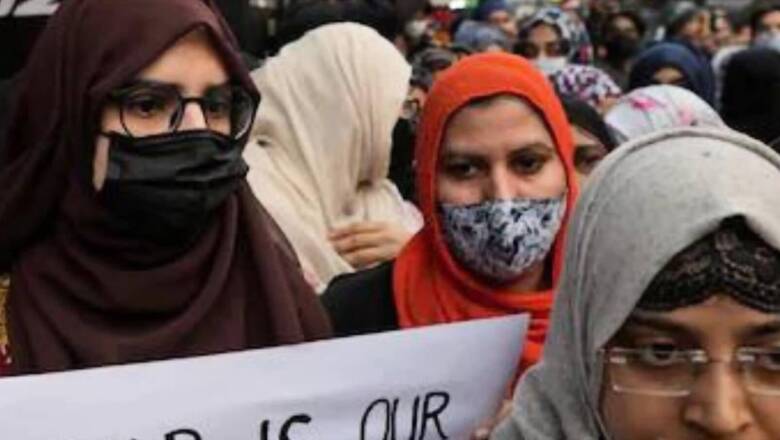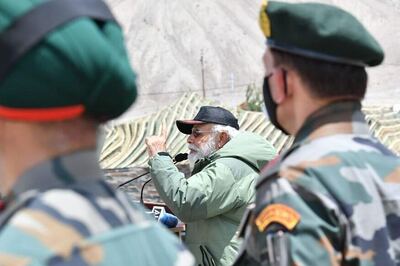
views
Winter 2016. On a local bus from Gokarna to Udupi taking a long break in Bhatkal, most of the women in the CBS wore hijab.
Local newspaper headlines that morning spoke of a certain Shafi Armar from Bhatkal as the main recruiter of ISIS in India. The atmosphere on the bus was tense. A precursory glance was enough to see that the Hindus and the Muslims sat separately. Only Hindus leafed through the newspapers dwelled on the headlines and looked at the picture of Armar. Those who boarded the bus during the break were quiet. I breathed a sigh of relief as we reached Udupi.
Also Read: Why It is Wrong to Equate Legitimate Hindu Concerns With a Political Party’s Agenda
He had spoken to the tourists gently and with sincere concern, but his words reminded me of an infamous slogan in the Israeli Kahanist radical right-wing demonstrations– “No Arabs, no terror attacks”.
The story of PU College is no surprise to anyone who has traveled to coastal Karnataka in India. Even if one is not Indian, nor speaks a word of Tulu or Kannada.
I have an unconventional suggestion at this point. Could we see the Supreme Court’s intervention in Muslim personal law in the Shah Bano case in the ’80s and the decision of educational institutions today to ban the wearing of the hijab as a disagreement of the Hindu middle class with the status quo of Indian Muslim relations with the State of India?
Muslim women in India, Israel or Europe do not wear the hijab as a measure of protest. Mohammed Ahmad Khan did not divorce his wife Shah Bano in protest. In contrast, the saffron protesters are proactive indeed. They protest against Ganga-Jamuni Tehzeeb, Taana Baana and against any other notion that Muslims and Hindus belong to the same cultural and national fabric in India. Opponents of the hijab wear saffron scarves to satirise the state of Indian secularism, to present secularism as a vacuous intellectual tool designed solely to appease minorities at all costs. Only the Hindu majority is subject to secular personal laws and to the dress code of educational institutions.
Also Read: Nehru Avoided Uniform Civil Code because Muslims were ‘Not Ready’. 70 Years On, Right Time for UCC is Now
In terms of rights-based discourse, it is much easier to defend hijab than triple talaq instant divorce. The women who wear the hijab have agency. The head covering is usually a personal decision. But as Tavleen Singh, who does not need anybody’s certificate for her secular credentials, indicates, personal choices are also a result of social norms that can be dangerous to the social fabric in India. I was not in India in the mid-1980s, but I suppose Rajiv Gandhi wouldn’t have shamefully changed the Indian constitution, overturning the Supreme Court, had he thought that Muslim women in India intended to vote en masse for the Congress party following the adoption of the court ruling.
Ten years ago, there was a case in Israel related to the current crisis. Jewish religious soldiers left a hall as soon as a woman took the stage to sing. They claimed that according to the laws of Judaism. a man is not permitted to listen to a singing woman in front of him. The Chief Rabbinate of Israel backed the soldiers, a move that created a crisis between the rabbinate and the IDF. The current defense minister, Benny Gantz, was the chief of staff in 2011, and the army decided not to give up. What turned out was that when the secular force – the Israeli army – insisted that it was the supreme authority and not the chief rabbinate, the religious elements also had to find a solution within the Jewish religious law, which allows soldiers to listen to women serving in mandatory military cultural events.
Therefore, it is not the human or civil rights discourse that is at the center of the debate, but the identity of India. In academia, historians can debate and bring evidence for their claims. In the public arena, the present is the lens through which the past is viewed.
Those who oppose Hindutva can bring evidence that pluralism and syncretism are in fact authentic Indian legacies. That Muslims celebrated Hindu holidays, that Hindus worshiped Indian Sufi saints, that tolerant Akbar laid the foundations of modern India. One can point out the Muslim influences on cuisine, Indian music and architecture. The influence of Dilip Kumar on Lata Mangeshkar, and on his sister-in-law Begum Para, the ambassador of liberated Indian femininity. Tales can be told of Ali Sardar Jafri, Khwaja Ahmad Abbas and other Marxist Muslims who contributed to Indian culture and were devoid of religious sentiment.
But alas, these are nostalgic stories. At present, the Hindu majority, half of which already votes for the BJP, sees a Muslim struggle over a foreign Muslim symbol. This framing gives a boost to Hindutva’s theory of one united nation, in which at some point, two communities decided to see themselves as external to this unity. Hijab, niqab and burqa are symbols of the Arabisation of Muslims in India, and no discourse of personal choice can mask this fact.
Lev Aran is a former coordinator of the Israel-India Parliamentary Friendship League. He is an Israel-based freelance columnist and journalist. His work has been published in Makor Rishon, Mida, Ynet MargAsia among other publications. He tweets at @LevAranlookeast. The views expressed in this article are those of the author and do not represent the stand of this publication.
Read all the Latest Opinion News and Breaking News here




















Comments
0 comment